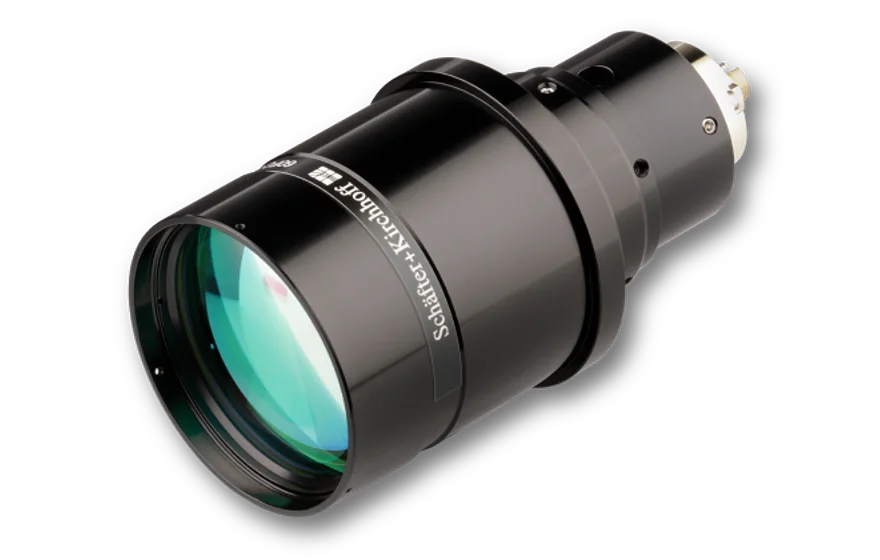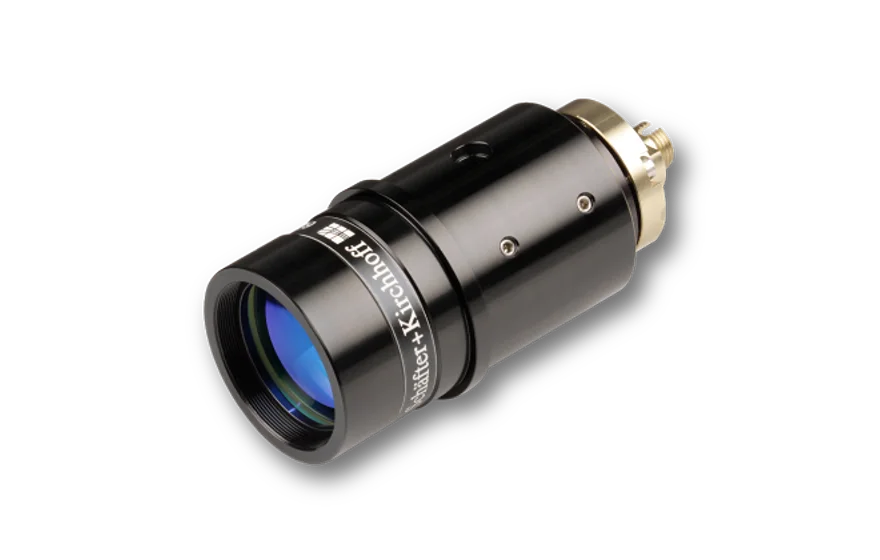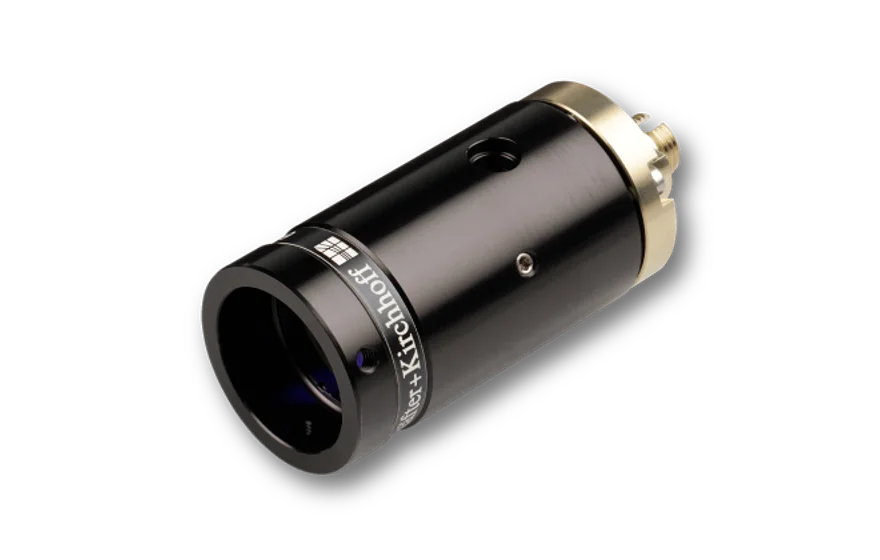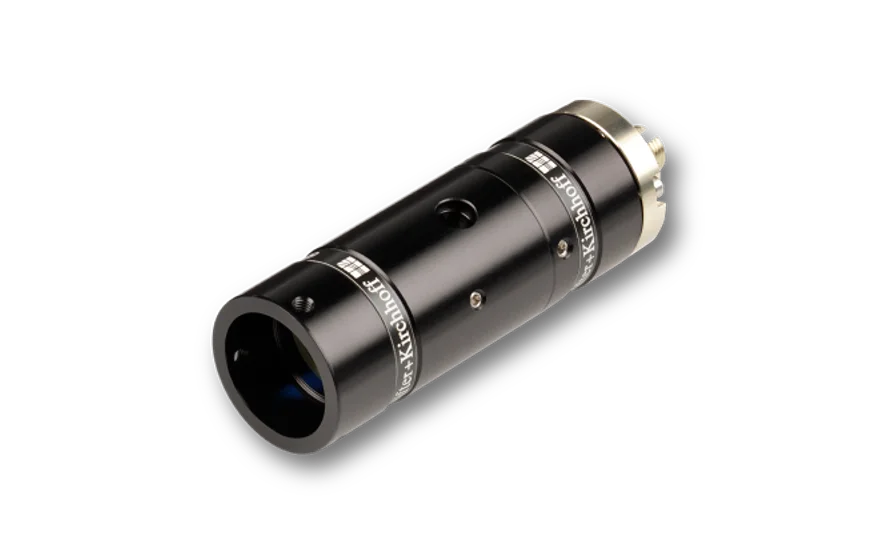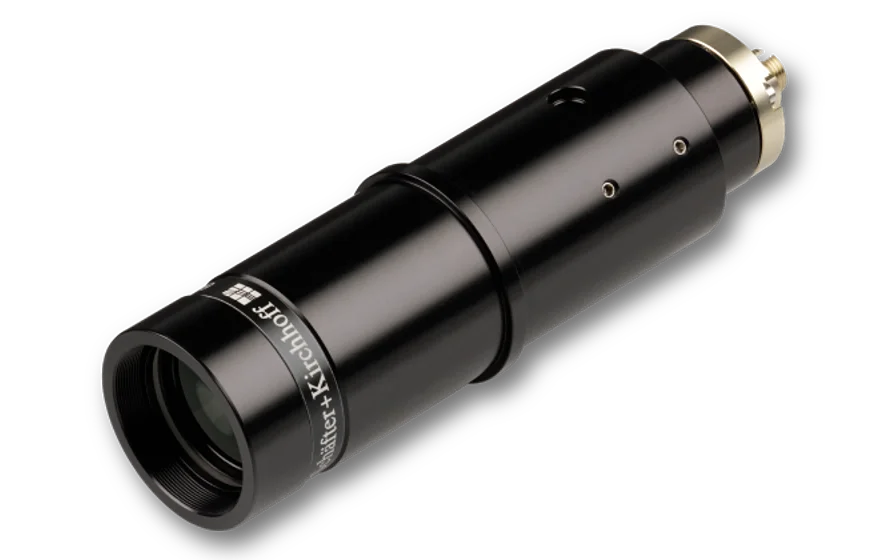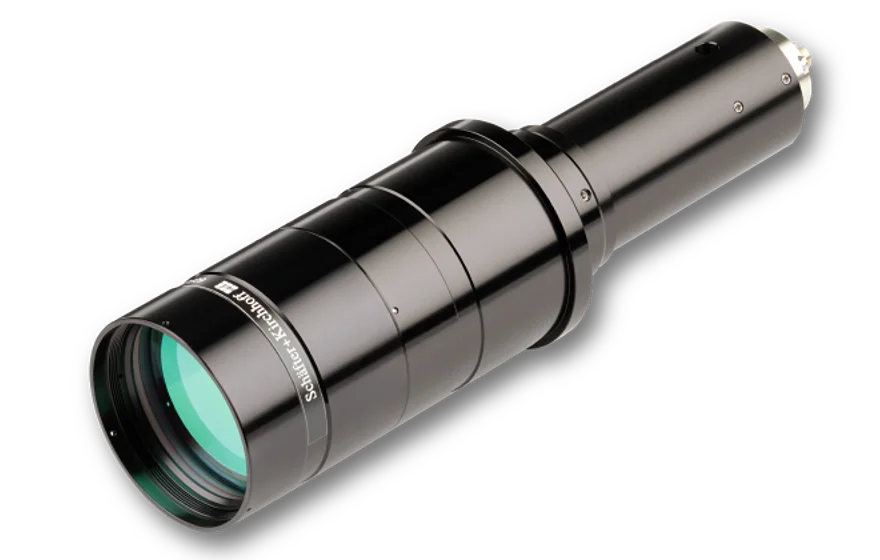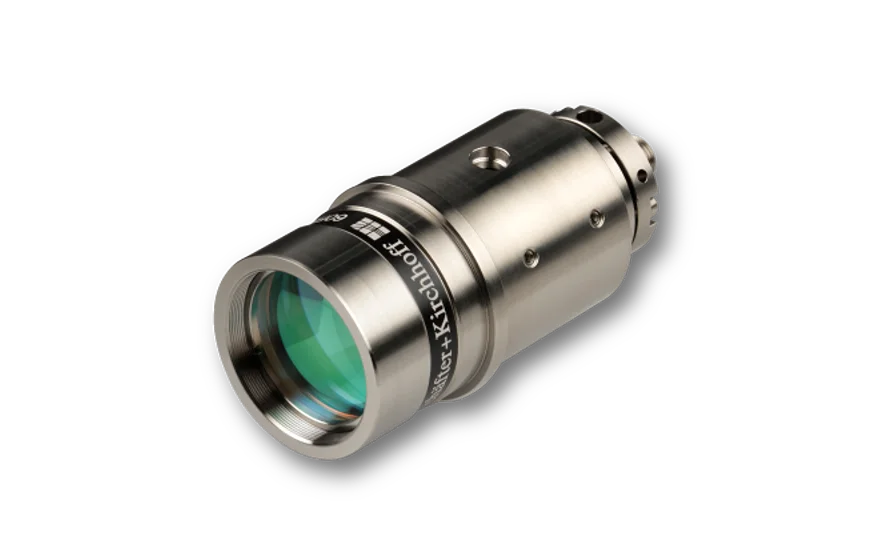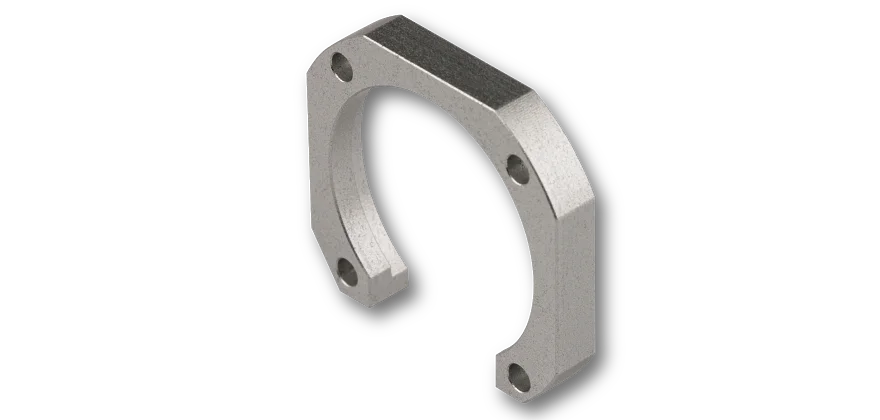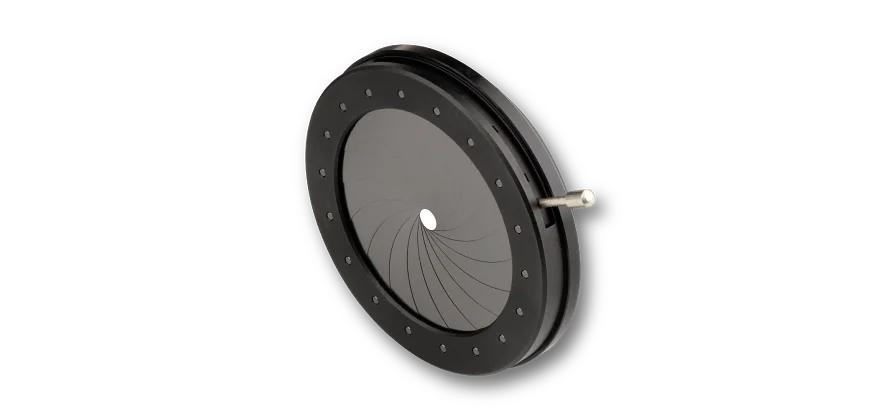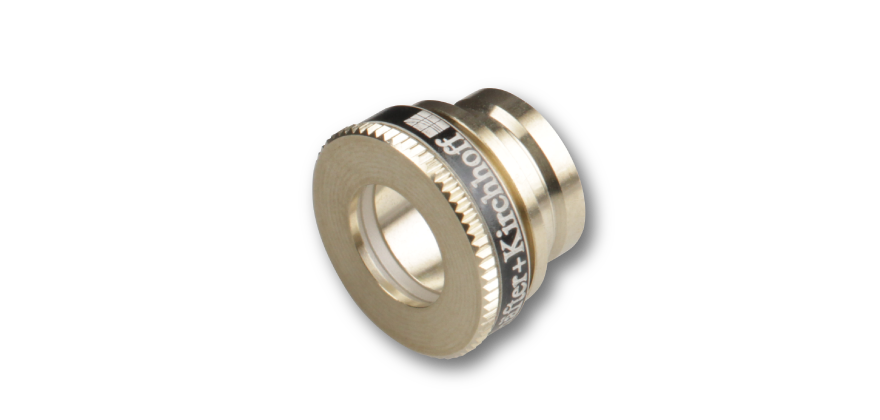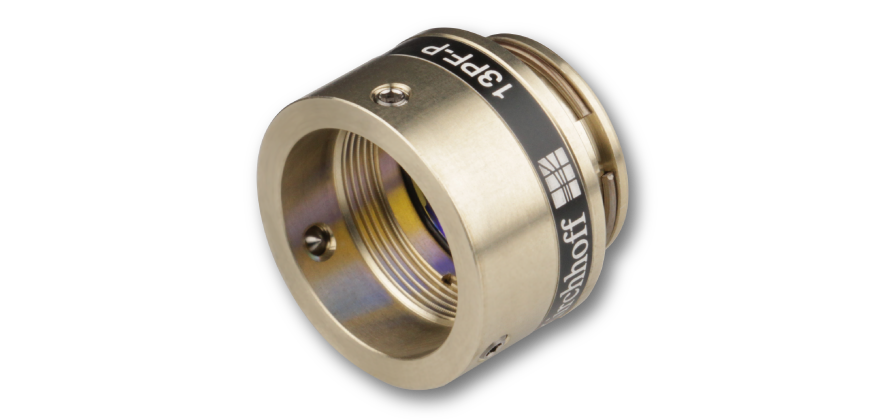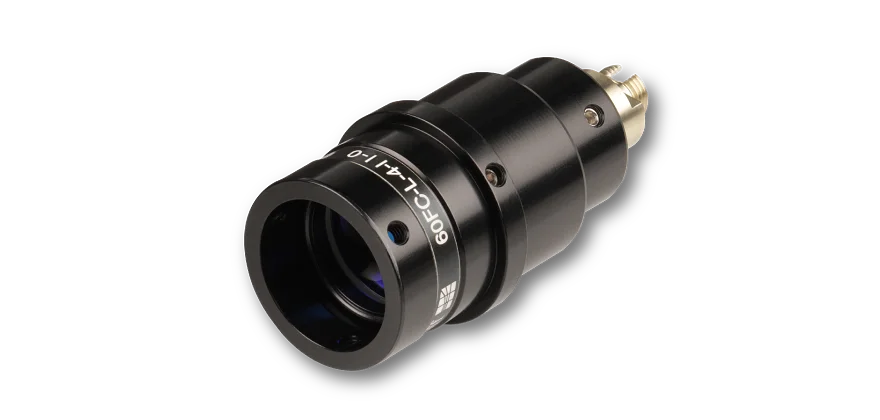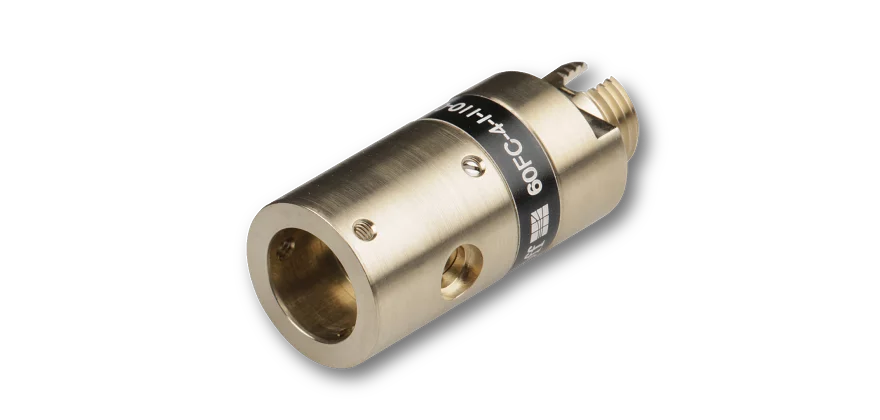The fiber collimators series 60FC-T are designed for collimating radiation exiting optical fiber cables with high pointing stability. They can also be used in reverse-mode as fiber incouplers. They are suitable for single-mode and polarization-maintaining fiber. Please note that for multimode collimation the intensity profile is not Gaussian and depends on certain fiber and radiation properties.
An optics for each applicationA large variety of collimating optics allows that the optimum focal length and the best lens type for a single wavelength (
monochromat) or a wavelength range (
achromat) can be selected for each application. All lenses are AR-coated.
Adjustment of focus and TILTThe distance between fiber end-face and collimating optics is adjusted by means of an eccentric key. The lens does not rotate when adjusting the focus. The final focus setting is locked by means of two radially arranged clamping screws. Additionally attachment optics can be mounted to the front of the collimator.
Additionally, the collimator has an integrated TILT adjustment for aligning the beam axis to the mechanical axis. This prevents vignetting of the collimated beam as well as diffraction arising from the clipped beam.
Optimum lens performance The angled polish of connectors of type APC is considered by a
pre-angled mechanical coupling axis that compensates the beam deflection and you can use the lens centrically. This minimizes aberrations simply resulting from a non-ideal beam path through the lens.
Connector Type The fiber collimator can be equipped with
receptacles of type FC PC (wide key*), FC APC (wide key*), ST or LSA (compatible with fiber connectors type DIN, AVIO and AVIM). In case of FC or LSA with a spring loaded ferrule the fiber coupler has an additional grub screw to increase pointing stability. *Even though the fiber coupler has a wide key receptacle it still can be used with both narrow key and wide key fibers. More information can be found
here.
Material
The fiber collimators are made of nickel silver and black anodized aluminum (standard) or in amagnetic titanium. In case of titanium, the relative permeability is near 1 (µr=1.00005) making it almost transparent to magnetic fields. The linear coefficient of thermal expansion is close to that of the optics so that a thermal stability over a larger temperature range can be expected.
MountingThe mounting options for Fiber Collimators 60FC-T can be found here for
diameter Ø25 mm without flange,
diameter Ø25/28 mm with flange,
diameter Ø32 mm,
diameter Ø45 mm and
diameter Ø55 mm.,
